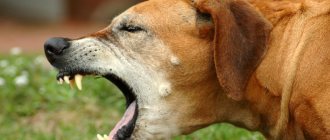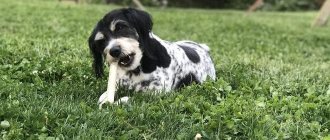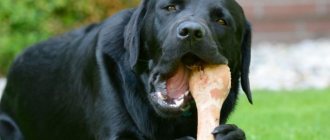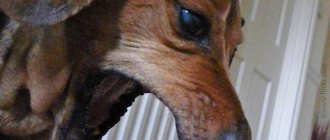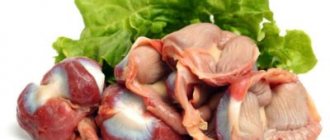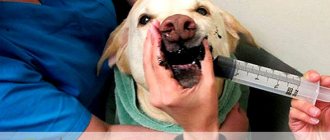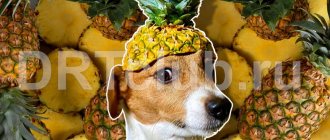The benefits of treats for animals
Four-legged pets, being predators by nature, need constant improvement of their main and formidable weapon - their jaws. This is why dogs love to chew hard objects throughout their lives: bones, pieces of wood, shoes, etc.
However, according to veterinary specialists and experienced dog breeders, the animal should not be allowed to chew tubular bones or sticks. This is fraught, first of all, with mouth injuries, suffocation, stomach clogging, and intestinal blockage. This is why professionals recommend using industrial products for pets.
Specialized stores offer owners of furry pets a wide selection of various treats, including bones for dogs. Delicious pet products, according to experienced dog breeders, are designed to solve the following problems:
- When changing teeth from milk teeth to molars, young individuals feel discomfort associated with the process of changing incisors and canines. It is during this period that most owners experience problems with the puppy's behavior. The baby begins to chew on everything: furniture, shoes, valuables. If you give chewing bones to dogs during this difficult period, then the extent of the damage from the puppy can be minimized.
- Industrial treats are also indispensable if the animal is forced to remain alone for a long time. Out of boredom, a dog can begin to act out and become mischievous, gnawing on the owner’s favorite shoes. In this case, artificial bones play an entertaining role.
- The pet store has a wide range of specialty products designed for oral care . Dog bones used for cleaning teeth are great for helping owners prevent dental problems in their furry pets.
The industrial product contains special abrasive particles that allow the animal to get rid of food debris in the interdental space and prevent the deposition of hard stone on the dent.
- In a specialized store, the owner can purchase industrial products enriched with vitamins and microelements . Such a convenient and attractive form for the animal allows you to supply the furry fidget’s body with useful substances. Most often, calcium bones for dogs are available for sale, which are an additional source of the mineral necessary for bone tissue and teeth.
Gelatin treats will help replenish collagen reserves, which is beneficial for the musculoskeletal system. According to veterinary experts, artificial chewing products allow the jaw muscles to work, which has a beneficial effect on the pet’s health.
We recommend reading about when a dog lacks calcium. From the article you will learn about the causes of calcium deficiency in dogs, symptoms of hypocalcemia, treatment with medications, nutritional supplements and diet correction. And here is more information about what to feed dogs depending on their age.
[custom_ads_shortcode1]
Which ones should not be given?
Boiled ones only harm your pet. After heat treatment, they become soft and lose almost all useful substances. They contain a lot of gluten, which, when it gets inside the stomach, forms a dense lump that is very difficult to remove from the body.
What branches can be given to rabbits in winter: pine or spruce?
What other bones should not be given to dogs? Under no circumstances should fish be present in a pet's diet. Small ones are especially dangerous, which often become the reason for surgical intervention.
Assorted food is also prohibited.
Important! It is unacceptable to feed a dog on dry food bone products. They cause a change in the acidity of the stomach, therefore it will be very difficult to digest such food.
Calcium
The composition of such a product includes, first of all, calcium. This mineral is necessary for both young and adult animals to form the musculoskeletal system and keep teeth in good shape. Experienced dog breeders recommend that owners of four-legged pets use calcium bones as an additional source of minerals and give the product according to the instructions.
As a rule, these bones are dosed depending on the dog’s weight. A large pet can be given one piece at a time, but for a miniature pet the bone is divided into 2-3 parts depending on body weight.
[custom_ads_shortcode3]
From tendons
This type of bone is most popular among owners of four-legged friends. Most often, bones for dogs made from tendons are purchased in order to brighten up leisure time when the pet is alone. A product made from tendons and connective tissue copes well with the problem of cleaning teeth from large food particles.
The advantage of such seeds is their natural composition. They make a tasty treat from veins and rawhide . As a rule, tendon bones do not contain dyes or preservatives and are excellent for allergic animals. Unlike natural bones, the artificial vein product is safe for the health of dogs.
[custom_ads_shortcode1]
What types of bones are there?
So what bones are we talking about? Typically, dogs enjoy three types of bones:
● Processed bones
These are the treats you can buy at pet stores. They usually consist of raw materials obtained from the slaughter of cows, pigs and other farm animals. These include rawhide products and bones themselves. They are often flavored to make them more palatable to dogs.
● Synthetic bones
Synthetic bones are man-made. They are usually made of rubber or silicone that is molded into the shape of a bone. They are often used for teething in puppies and for playing with older dogs. This type of bone is not intended to be swallowed. While playing, be sure to make sure your pet doesn’t chew the toy.
● Natural bones
It is this type of bones that we will talk about in today’s topic. Natural bones are those that you can buy at the market, butcher shop or farmer.
Chewable
In the assortment of the pet store there is always a product for chewing by pets of a wide variety of sizes. Thus, bones for small dogs are small in size. When choosing an artificial substitute, the owner should be guided, first of all, by safety. Manufacturers who produce chewing bones for animals, as a rule, detail in the instructions for dogs what breeds and what weight a particular product is intended for.
To help in choosing a chewing bone for your pet, advice from the seller or consultation with a veterinarian will help. Puppy owners should be aware that most chew bones are not suitable for babies under 4 months of age.
[custom_ads_shortcode2]
FAQ
At what age can a puppy be given bones?
It can be introduced into the diet of babies from 3-4 months. The puppy is monitored while eating, never left alone. The product is chosen in such a size that it is not possible to chew it completely. After the puppy gnaws the meat and cartilage from the bone, it is taken away.
Do bones wear down dogs' teeth?
Yes, they are erased. Rodents, not dogs, grow teeth throughout their lives. Therefore, such a component should not be given too often, and “bare bones” should not be used.
What to do if your dog is constipated after eating bones?
If the stool has acquired a whitish tint interspersed with residues, the frequency of dispensing the product should be reduced. For constipation, Vaseline oil is given to facilitate bowel movements. For prolonged constipation, consult a veterinarian.
What to do if a dog chokes on a bone?
You should calm the dog down, examine the mouth and try to remove the stuck foreign object. Don't panic. Remove the fragment carefully, trying not to cause further injury. Contact a veterinarian for additional examination.
Are bones digested in a dog's stomach?
The acidity of a dog's stomach is higher than that of a human, which allows the bones to be completely digested.
How often can you give bones to your dog?
Raw beef bones should be given to your tailed pet no more than twice a week, doing this either with the main portion of food or after.
Gelatinous
Among the variety of artificial food products for animals, gelatin treats occupy a significant place. Made from a natural product, such bones have a number of positive properties. First of all, they perfectly remove food debris from the interdental space, preventing the formation of plaque. In addition, gelatin treats allow the pet to be distracted for a long time while the owner is away. The product is an additional source of collagen for dogs.
Many manufacturers add a variety of useful additives to the product, for example, vitamins and medicinal plant extracts. In a specialized store, the owner will choose a gelatin treat for even the most spoiled pet. Most often, dogs prefer bones that taste like cheese, meat, or cottage cheese. These treats are perfect for rewarding your dog during training.
[custom_ads_shortcode3]
Manufacturers of dog bones
To ensure that dental bones bring only benefits, choose products from reliable manufacturers for your pet.
Produced by the Triol
In addition to veins and offal, dog bone contains iron, calcium and phosphorus. Adding a small amount of duck or chicken to the product stimulates chewing.
TiTBiT Company
adds not only skin to dog teeth bones, but also brewer's yeast, chitosan, cottage cheese, cheese, rose hips, and salmon. Turkey, pieces of lamb or veal are used as meat filler.
Brand " 8 in 1"
» produces a low-calorie product that, in addition to rawhide, contains some beef and chicken.
The choice of such a delicious toothpick largely depends on the size of your four-legged friend - small pressed treats are more suitable for small pets, and large dogs can sharpen their teeth on dried beef skin tied at the ends with knots.
In our online store “12 Monkeys” you can buy dog bones for teeth with home delivery at a low price. Bonuses accrued automatically with every purchase will definitely lead you to us again. The accumulated “monkeys” can be used to pay for the purchase of pet supplies from us. Thus, even an expensive product can be purchased by you for FREE or simply for cheap. Isn't it nice?
Chicken
Chicken bones for dogs, however, like any other animal origin, according to veterinary specialists and experienced dog breeders, should not be given to four-legged pets. This is not the safest option. Natural bones often provoke diarrhea, bleeding, gastritis, and ulcerative lesions of the digestive tract in animals.
In severe cases, bone fragments can lead to intestinal blockage and gastric volvulus. The best option would be to replace a natural product with an artificial analogue. Among the numerous variety of industrial treats, a caring owner can easily find an artificial chicken-flavored treat for a picky pet.
Watch this video about the benefits of rawhide bones for dogs:
[custom_ads_shortcode1]
Consequences of eating bones
Under no circumstances should you give bones daily. Optimally – once or twice a week, in small quantities. You must be prepared for complications, even if you follow all the rules:
- poisoning. The raw product may accumulate pathogenic flora, toxins and bacteria. It is important to purchase meat products from a trusted seller;
- thinning and damage to tooth enamel;
- injuries to the mucous membrane of the mouth;
- disruption of the gastrointestinal tract: constipation, diarrhea, indigestion;
- vomiting due to parts getting stuck in the stomach;
- fragments getting stuck in the throat, which can lead to suffocation.
At the first sign of illness, if it is a consequence of eating bones, contact your veterinarian immediately. In some cases, immediate surgical intervention is required.
What to do if your dog swallows or chokes on a bone
Unfortunately, not always even such a harmless, at first glance, product as tendon bones may turn out to be safe for a four-legged scoundrel. In the practice of veterinary specialists, there are often cases when a dog swallows a bone or it gets stuck in the throat.
First of all, the owner should not lose composure and remain calm. It is necessary to make sure that the bone is actually in the respiratory tract. To do this, you need to calm the dog down, open its mouth and, using a flashlight, check for the presence of a foreign object.
If a small dog has a stuck bone, you can grab it by the hind legs and hold it there for a few minutes. In a critical situation, the owner can make 4-5 jerking movements in the area of the pet's diaphragm. You should not try to remove the bone from your dog's mouth with your hands.
Inept actions can lead to the fact that a foreign body further injures the animal . The best option in this situation would be to immediately contact a specialized institution.
If a dog is choking on a bone, the first thing a veterinarian will do is examine the pharynx and airways using a special device with a light. If a foreign object is found, a professional will remove it with long forceps. In some cases, endoscopic equipment comes to the rescue.
To avoid health problems, veterinary experts do not recommend giving your miniature pet bones for large dogs. Inconsistency in size can lead to the dog choking on a large treat.
We recommend reading about how to understand why a dog is choking. From the article you will learn about why a dog chokes after barking, when drinking water, coughing and more, how to help your pet. And here is more information about what to do if you suspect a foreign body in a dog.
The variety of artificial treats allows you to choose the best option, taking into account the age, size, and taste preferences of your four-legged pet. Bones for dogs help not only in the fight against boredom, but also strengthen the jaws, get rid of food debris, and prevent the deposition of tartar.
Many manufacturers fortify gelatin treats with vitamins and minerals. Such products can serve as a source of useful substances and be used for training your pet. If a dog chokes on a bone, it must be taken to a veterinary facility immediately.
[custom_ads_shortcode2]
Forbidden dice
The dog is not given chicken bones. They break when chewed, forming many sharp small elements. Sharp pieces easily injure the walls of the stomach and intestinal lining.
Another reason why a dog should not be given chicken bones is inflammatory and infectious diseases. Unheated poultry carcasses contain dangerous bacteria. In the acidic environment of a dog's stomach, harmful organisms multiply and cause unpleasant consequences (poisoning).
Expert opinion
Anna Abramenko
An avid dog lover. Experience in veterinary medicine since 2009.
Ask a Question
Feeding your pet pork bones with leftover raw meat also leads to problems associated with illness. Thus, the dog becomes infected with worms.
Cooked soup sets are softer than raw ones, but carry just as much harm. When they are processed at high temperatures, gluten is formed. After swallowing, a clot appears in the dog’s stomach or intestines, which is difficult to remove from the body. Subsequently - constipation, severe spasmodic pain. Some cases require surgical intervention.
Eating chicken, pork and rabbit bones by your pet causes serious health problems. An alternative is to treat them with special chews for dogs. They are sold in pet stores.
The consequences of feeding chicken and pork bones are disastrous for small puppies less than 2 months old. Their fragile gastrointestinal tract does not digest rough food well. To prevent unpleasant results, during the first few trimesters of life, the dog does not include food based on bone tissue in its diet.
Useful video
Watch this video about the benefits of chewing bones for dogs:
One of a dog's favorite pastimes is gnawing on something. Its owner must carefully ensure that the pet’s teeth do not come across unsuitable things, including those harmful to health. And in order for the animal to satisfy its needs, it should be given treats specially designed for this purpose. The optimal choice is a product that will care for the dog’s teeth and oral cavity.
The domestic dog traces its ancestry to the wolf, and over tens of thousands of years near humans, it has not lost the characteristic features of a predator, in particular, powerful jaws and 42 teeth, which are designed for gnawing and tearing food, and not for chewing it. Our pets have long since gotten rid of the need to hunt to get food and switched to industrially produced food. However, they continue to feel the urge to use their teeth for their intended purpose. And if an animal gets at its disposal something that can be chewed, it cannot hide its pleasure.
Therefore, the pet owner should make sure that the dog has access to suitable items.
[custom_ads_shortcode3]
Benefits and harms
Eating bones by a dog leads to the death of the animal - a myth. Dog lovers who exclude this product from their diet are mistaken in assuming that this can harm their body. Biting raw seeds is analogous to high-quality brushing of teeth. During chewing, excess plaque is removed. Prevents some gum problems.
Raw bones are a source of phosphorus, calcium and other vitamins and minerals that dogs need daily. Eating properly selected seeds is beneficial for your pet’s body.
Biting develops the stomach muscles and prevents the formation of gases in the intestines. This delicacy promotes the proper functioning of the gastrointestinal tract and relieves the animal from various diseases.
Dogs participating in exhibitions should not eat raw bones. They provoke caries, thin tooth enamel and change the bite.
It takes a lot of time for an animal's body to digest rough food. Thanks to this, useful microelements have time to be absorbed, and the intestines are strengthened.
Expert opinion
Anna Abramenko
An avid dog lover. Experience in veterinary medicine since 2009.
Ask a Question
The disadvantage of feeding bones is the age restrictions. Veterinarians do not recommend including puppies in food that are too small.
Adult dogs are allowed to eat bones no more than 2-3 times a week. Otherwise, the mouth muscles will be overstrained.
Damage to the dog's oral cavity is another disadvantage. Small fragments can become embedded in the gums and cause pain to the animal.
Of particular danger are crumbling bones that remain in the dog’s throat when swallowed. They cause suffocation. If the veterinarian does not provide timely assistance, the animal may die.
Bone elements remaining in the intestines cause constipation and diarrhea with bloody streaks. In this case, only surgery will help.
No harm to health
The dog should not chew anything. If she spoils the owner’s slippers or stool, that’s not so bad. It is much worse when an animal has a stick or a bone at its disposal, no matter what it is - chicken, beef or pork.
It is strictly not recommended to give either sticks or bones to your pet. They can cause digestive problems, injure your dog's gums, or cause harm to his intestines with sharp edges.
Thus, the only right choice for animal games is special treats in the form of artificial bones. Their use eliminates the possibility of injury to the dog, and the composition is completely safe. Typically, artificial dog bone is made from compressed sinew, leather, and other similar ingredients. As an example, we can cite products manufactured under the TiTBiT and Happy Dog brands. These treats allow your dog to satisfy his urge to chew on something without causing any harm to his health. Therefore, the answer to the question “Do dogs need artificial bones?” will be positive. Subscribe to our newsletter and get a free veterinary consultation
Thanks for subscribing!
[custom_ads_shortcode1]
Briefly about the main thing
- Bones are a necessary component of an animal’s diet;
- Beef is given raw at the rate of approximately 20% of the meat component of the serving;
- The frequency with which treats should be given is no more than twice a week;
- You cannot give poultry, rabbit, lamb and fish;
- Dry, whitish stools and problems with bowel movements indicate the need to reduce the amount of food consumed;
- The mouth requires special care - inspection of the mucous membrane after consumption;
- It is permissible to introduce it into the diet only when feeding the dog natural food;
- Puppies are given treats starting from 3-4 months;
- It is possible to replace natural bones with specialized industrial treats;
- If you feel unwell as a result of eating bones, you should contact your veterinarian.
Do your dogs love to chew sugar bones? How often do you give them to dogs? What do you think is better: raw natural or industrial bone treats? Tell us about your experience in the comments, please!
More benefits
But that is not all. Some artificial bones for dogs not only perform a playful and entertaining function, but also have a positive effect on the health of the pet.
We are talking about X-shaped bones for caring for the oral cavity (for example, Pedigree DentaStix). Their specific shape helps the dog, while chewing the product, simultaneously brush his teeth, removing plaque from them even where a toothbrush may not reach. Another advantage of such treats is that they contain special components that prevent the formation of tartar. The bottom line from all this is this: artificial bones are the best and safest way to satisfy your dog's urge to chew on something. Moreover, some of them are capable of performing hygiene procedures, which only increases the value and benefit of such products.
Improper feeding of an animal can lead to dangerous consequences, including injury to internal organs. The dog may swallow a sharp bone fragment that can damage the throat or become lodged in it, blocking the airway.
[custom_ads_shortcode2]
Possible dangerous consequences
Constantly chewing bones causes teeth to wear out prematurely. If we are talking about an old animal, then this process can even cause tooth loss.
Dental injuries
There is a strong belief that bones help dogs get rid of plaque. This is partly true, but still they do not completely get rid of plaque, and they also severely scratch the enamel, and this eventually leads to the appearance of caries.
The second danger is grinding of teeth. Thirdly, while chewing, the dog can break his teeth and even get his jaw dislocated.
Soft tissue injuries
The bone can get stuck between the teeth or in the gum or palate. This will lead to the development of an inflammatory process in the oral cavity. Often you have to contact a veterinarian to remove debris.
Digestive problems
You can’t pamper your pets too much, regardless of whether it’s a lamb or beef delicacy. Too often, feeding bones can cause inflammation of the abdominal cavity due to regular mechanical injuries to the digestive organs.
Note! If the bone does not come out naturally, it will cause vomiting or diarrhea. They are not digested by the dog's stomach.
Is it possible to give a dog natural bones?
The animal's stomach juice does not completely digest and soften the bone, and once in the intestines, it gets stuck there, causing the dog constipation, diarrhea, sometimes even mixed with blood. In the most dangerous cases, sharp parts of the bones pierce the intestinal walls.
Large fragments that get into the stomach may not pass into the intestines at all. As a result, the dog begins to vomit violently. Only a veterinarian can help remove the fragments. To prevent dangerous situations from occurring, you should remember which bones are contraindicated for dogs:
- Tubular chicken bones from both factory and poultry. Painted into small fragments, chicken bones easily get stuck in the teeth, causing pain to the dog.
- Rabbit bones are sharp and small.
- Turkey bones are very large and can get stuck in a dog's intestines.
- Broken goose and duck bones. They are very dangerous as they have sharp edges.
- Fish bones - injure the larynx and can cause suffocation.
- Boiled poultry vertebrae - in the intestines they unite into one dense mass and cannot come out, causing problems with bowel movements in the dog.
- Lamb bones - when bitten, they become very sharp.
Raw beef bones are good for dogs. Cartilaginous veal ribs can be given to a puppy and an adult dog, but under supervision. It is acceptable to feed the dog moss, but it is advisable that it contains remains of meat and not fat (as it causes intestinal disorders).
Pets also enjoy chewing dry beef bones, but they are not very useful. As soon as your pet has eaten meat and cartilage tissue, take the bone away from him so that he does not chew or swallow the fragments.
Is it possible to give natural bones?
If the dog bone is of the correct shape, then you can give it to the dog, for example, a beef bone. But its size should be average. Ribs are also ideal for a treat. Large beef bone is hard and dense. A large dog will not be able to chew it and may damage its teeth.
Expert opinion
Anna Abramenko
An avid dog lover. Experience in veterinary medicine since 2009.
Ask a Question
Veterinarians do not recommend boiling the bones. After processing at high temperatures, no useful substances remain in them.
A dog is allowed to eat trimmed meat from a beef or lamb bone. Cartilaginous tissue is given to it completely, without pre-treatment.
It is recommended to treat puppies with a large beef bone. Their mouth muscles are not yet well developed, but the process itself will be interesting to them.
Large adult dogs are given cartilaginous veal ribs. They are able to chew them completely.
Bones of the correct size are suitable for use by dogs of all breeds and ages. They are sold in butcher shops on the market and are inexpensive. It is safe to treat your pet to turkey bones, vertebral trimmings, and breastbone.
Before buying bones, you should check the age of the killed animal. If it was young, then there is no danger for the dog in eating it. In old cows, harmful substances accumulate in the spongy structure of the skeleton. When ingested by a dog, they cause allergies, eating disorders or poisoning.
The owner, choosing between boiled or raw bones, should give preference to the second. The first will be of no use, except for the chewing process itself. Only raw remains are suitable for cleaning teeth and proper digestion.
Industrial bones
Dog owners still disagree on whether they should give their pets artificial bones. On the one hand, they have a number of advantages:
- Chewing bones is useful for preventing tartar and plaque.
- Busy with a chew toy, the dog will not damage your furniture and objects in the house. He will have the need to chew in any case, but if you buy a bone for him, you can save the things that are dear to you.
- For puppies, chewing helps relieve discomfort from teething molars and stimulates their growth.
- Artificial chewing bones put stress on the muscles and teeth, developing and strengthening the dog’s jaw system.
- They can serve as an additional nutritional supplement due to their collagen and protein content.
The disadvantages of chewing bones include the fact that they are treated with chemical materials, and dyes and flavors are used to give them a “tasty appearance.” Many of these toys are made of vinyl and do not contain warning labels. Vinyl bones contain phthalates, which increase your dog's risk of liver, kidney, and reproductive organ disease.
Many manufacturers claim that they make bones made from non-toxic materials, but check with your veterinarian before giving your pet a new chew toy.
[custom_ads_shortcode1]
Why does a dog chew bones?
Experienced owners know that even a well-fed dog will never refuse a tasty bone. Thus, hunger has nothing to do with the tailed pets’ love for bones. Note that this product contains a lot of calcium, but little organic substances.
Historically, almost 8 million years ago, canines hunted in packs, which made it possible to obtain abundant prey. The meat of wild animals developed the jaw apparatus of dogs, making the teeth sharper and larger, and the jaws more powerful in the process of evolution. The bones acted as a toothbrush, helping to free the mouth from stuck pieces of food. In addition, when chewing coarse solid food, the gums were massaged and the jaw was trained.
Nowadays, bones are needed by dogs for the same purpose. In addition, dogs perceive such a treat as a kind of trophy that they can play with or leave for later, so that it acquires a smell that is pleasant to the animal’s nose.
The dog's body perfectly digests bone remains, obtaining calcium and additional substances from them. Calcium is supplied mainly in the animal's fur.
If an animal’s diet contains a lot of this component, its skin becomes tougher, shiny and prickly to the touch. When changing the diet towards a decrease in quantity, it becomes more elastic. Balance and dosage are important.
